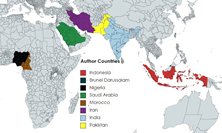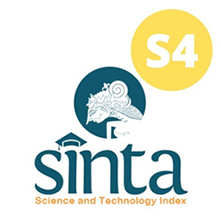Fuzzy Logic Temperature Control on Baby Incubator Transport Battery Efficiency
Abstract
Baby incubator transport is a life support tool used to maintain the body temperature of newborn babies during transportation from one place to another, such as from a hospital to an intensive care center with more complete facilities. The problem that often occurs in transport incubators is limitations in the power system. Baby incubator transport uses a battery as the main power source. However, the limited battery power can cause risks to the baby if there is a problem with the power system or the battery runs out. This study aims to monitor the remaining battery voltage in a transport baby incubator that uses fuzzy logic to control the temperature inside and will compare with the performance of PID control. This research uses a fuzzy logic method to control temperature and maximize battery power. In this study, researchers only looked at the efficiency of the fuzzy logic method in temperature control and the battery that will be used. The research uses a display that will display the battery voltage and current values, battery power percentage, skin temperature, chamber temperature, humidity and the selected temperature control. The module that has been made is then compared with the Digital Multimeter measuring instrument. From the results of data collection, the measurement of the remaining battery voltage between the sensor reading and the measuring instrument has a difference where at a temperature of 34 ºC it is 2.1%, at a temperature of 35 ºC it is 2% and at a temperature of 36 ºC it is 3.9%. When compared to research using PID control, fuzzy logic takes longer to reach the desired temperature and demands more battery power when compared to PID control.

This work is licensed under a Creative Commons Attribution-ShareAlike 4.0 International License.
Authors who publish with this journal agree to the following terms:
- Authors retain copyright and grant the journal right of first publication with the work simultaneously licensed under a Creative Commons Attribution License that allows others to share the work with an acknowledgement of the work's authorship and initial publication in this journal.
- Authors are able to enter into separate, additional contractual arrangements for the non-exclusive distribution of the journal's published version of the work (e.g., post it to an institutional repository or publish it in a book), with an acknowledgement of its initial publication in this journal.
- Authors are permitted and encouraged to post their work online (e.g., in institutional repositories or on their website) prior to and during the submission process, as it can lead to productive exchanges, as well as earlier and greater citation of published work (See The Effect of Open Access).











